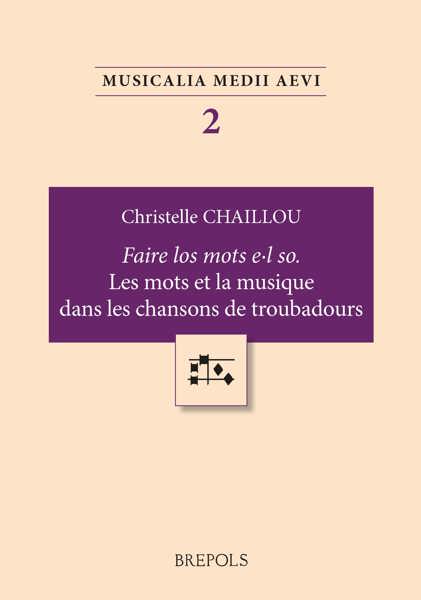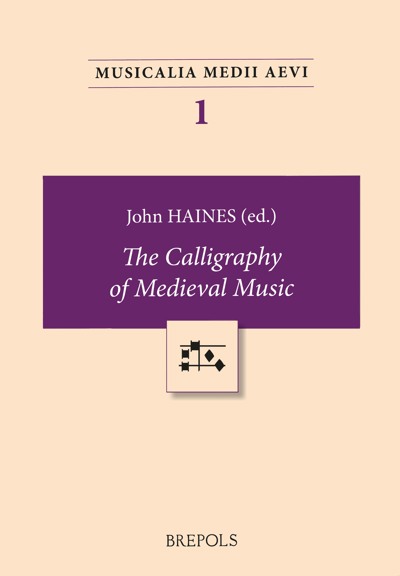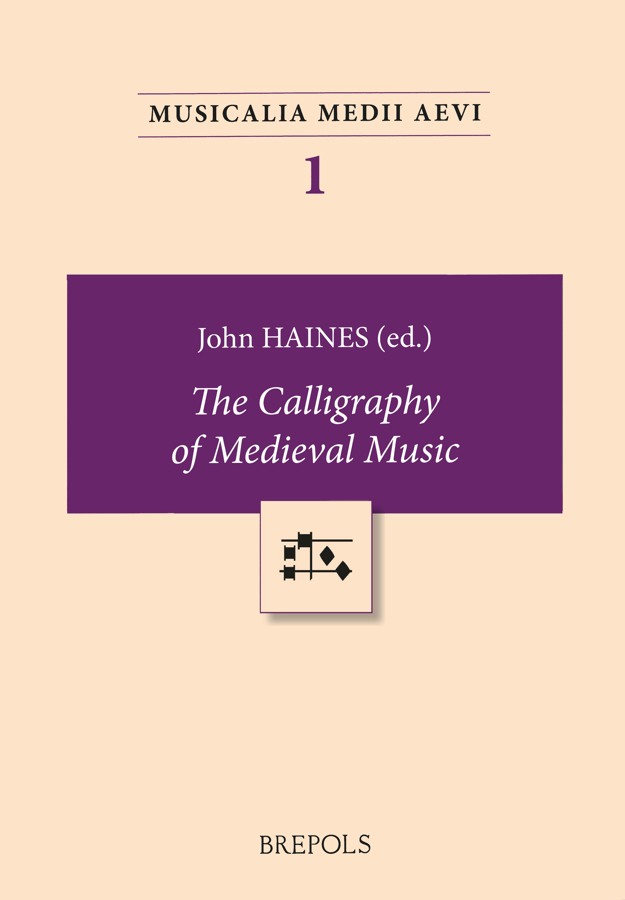
The Calligraphy of Medieval Music
John Haines (ed)
- Pages: 276 p.
- Size:178 x 254 mm
- Illustrations:116 b/w, 21 col.
- Language(s):English, French
- Publication Year:2011
- € 75,00 EXCL. VAT RETAIL PRICE
- ISBN: 978-2-503-54005-4
- Paperback
- Available
- € 75,00 EXCL. VAT RETAIL PRICE
- ISBN: 978-2-503-54049-8
- E-book
- Available
"The Calligraphy of Medieval Music offers a rich treasury of articles written by top-quality scholars (...). The publication (...) aims to provide a broad overview of the history of calligraphy across the entire spectrum of medieval music notation." (Inga Behrendt, in: The Medieval Review 12.09.31)
"...the individual studies that constitute the volume are rich in detail and nuance. Together, they represent an important contribution to the field of notational studies and an invitation for further scholarship." (Aliston Altstatt, in: Speculum, 88, 2013, p. 808)
"This book will surely be a valuable addition and required reading on many Undergraduate and Masters music courses. (...) The strengths of this book are carried by the expertise of the contributors, offering brief but detailed chapters, each with an in-depth bibliography." (Alexandra Buckle, in: Fontes Artis Musicae, 60/1, 2013, p. 26-28)
The Calligraphy of Medieval Music treats the practical aspects of the book making and music writing trades in the Middle Ages. It covers most major regions of music writing in medieval Europe, from Sicily to England and from Spain to the eastern Germanic regions. Specific issues raised by the contributors include the pricking and ruling of books; the writing habits of scribes and their reliance on memory; the cultural influence of monastic orders such as the Carthusians; graphic variants between regional styles of music notation ranging from tenth-century Saint-Gall to sixteenth-century Cambrai; and the impact of print on late medieval notation. The volume opens with a few essays dealing with general issues such as page layout and manuscript production both in and out of medieval Europe. The second part of the book covers early music notations from the tenth and eleventh centuries, and the third part, the twelfth to the sixteenth centuries.
John Haines is Associate Professor of Music and Medieval Studies at the University of Toronto where he holds a Canada Research Chair. He is the author of Eight Centuries of Troubadours and Trouveres (2004), Satire in the Songs of Renart le nouvel (2009) and Medieval Song in Romance Languages (2010), as well as the co-editor with Randall Rosenfeld of Music and Medieval Manuscripts: Paleography and Performance (2004). He has also published numerous articles in such periodicals as Scriptorium and Early Music History. In Toronto, he directs the research project Nota Quadrata.
With Contributions written by: Giacomo Baroffio, Anna Maria Busse Berger, Olivier Cullin, Albert Derolez, Jean-Luc Deuffic, Lawrence Earp, Margot Fassler, Barbara Haggh-Huglo, Getatchew Haile, John Haines, David Hiley, Michel Huglo, Rankin, Susana Zapke.
Table of contents
John Haines, Introduction
Part I : Writing medieval music
1. Michel Huglo, Toward a scientific palaeography of music
2. Albert Derolez, The codicology of late medieval music manuscripts: some preliminary observations
3. Getatchew Haile, Manuscript production in Ethiopia: an ongoing practice
Part II : Early medieval notations
4. Susan Rankin, Calligraphy and the study of neumatic notations
5. Jean-Luc Deuffic, La notation neumatique bretonne : manuscrits et centres de diffusion (Xe-XIIe siècle)
6. Susana Zapke, Dating neumes according to their morphology: the corpus of Toledo
7. Giacomo Baroffio, Music writing styles in medieval Italy
8. Margot Fassler, Liturgical books and book production in the thirteenth-century diocese of Chartres: the case of Biblioteca Apostolica Vaticana, Vat. Lat. 4756
9. David Hiley, Some characteristic neumes in North French, Sicilian and Italian chant
10. Michel Huglo, The earliest developments in square notation: twelfth-century Aquitaine
Part III : Later medieval notations
11. Olivier Cullin, Notation in Carthusian liturgical books: preliminary remarks
12. Michel Huglo, Dominican and Franciscan books: similarities and differences between their notations
13. John Haines, On ligaturae and their properties: medieval music notation as esoteric writing
14. Lawrence Earp, Interpreting the deluxe manuscript: exigencies of scribal practice and manuscript production in Machaut
15. Anna Maria Busse Berger, The consequences of Ars Nova notation
16. Barbara Haggh, The meeting of chant and polyphony in monophonic square notation from Cambrai Cathedral 1250-1550

